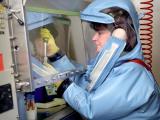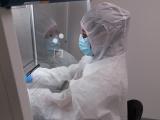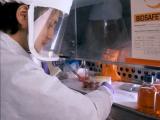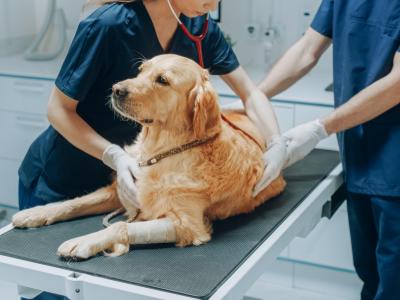A federal advisory group last week finalized a set of recommendations for the government to use in assessing and funding gain-of-function (GOF) studies on H5N1 avian influenza and other viruses, the last of a set of tasks from the Obama administration to address the sometimes controversial work.
In October 2014, the administration announced a pause on federally funded GOF research, which involves studies that enhance the pathogenicity, transmissibility or host range of a pathogen to learn more about it. The White House then asked the National Science Advisory Board for Biosecurity (NSABB) to come up with recommendations to help federal officials weigh funding decisions.
GOF studies have triggered "dual-use" worries—that methods meant for beneficial purposes could be used to create bioterror threats if they found their way into the wrong hands. Some experts have also raised concerns about accidental release of the experimental pathogens, especially in light of recent safety lapses involving federal facilities.
Risk-benefit, ethics reports
Since its charge from the White House, the NSABB commissioned a more-than-1,000-page risk-benefit assessment to guide its work on the final guidance, along with an ethics white paper. The risk-benefit assessment, conducted by Gryphon Scientific, is posted on the company's Web site.
The group also held two National Academies symposia on GOF issues to provide a forum for open discussion and to help inform the NSABB's work on its White House tasks, one in December 2014 and the other in March.
Unanimous vote to finalize
Christopher Viggiani, PhD, the NSABB's executive director at the National Institutes of Health, told CIDRAP News that the NSABB at its May 24 meeting voted unanimously to finalize its working group's draft recommendations with a few minor edits.
He said the final report will be posted on the NSABB Web site in the coming weeks, once it is formatted and copyedited. He added that the board would also soon post slides and other meeting materials.
According to a May 27 news report from Science, the recommendations list examples of which GOF studies are of concern, slightly modifies its definition of GOF research of concern to reflect that not all nations are able to deploy public health countermeasures, sets out a process for reviewing studies, and calls for a new federal advisory board to publicly review GOF policies, but not specific experiments.
The NSABB's report also suggests that oversight be extended to privately funded studies and that federal officials establish a system for tracking lab accidents and a system for institutional review boards to share their GOF proposals, according to the Science report.
Viggiani said the NSABB has accomplished the Obama administration's tasks, and as the next step, staff from the White House Office of Science and Technology Policy and the National Security Council will lead an interagency effort to consider the NSABB's recommendations and adjust policy accordingly.
"The entire deliberative process record will be considered in this policy process, including NSABB recommendations, discussions from the National Academies workshops, Gryphon's risk-benefit analysis, and all public comments that have been received," Viggiani said. He noted the whole process will conclude once the US government issues a new policy for this type of work.
So far, it's unclear how much longer the GOF research moratorium will remain in place. Soon after the pause the Obama administration loosened restrictions on a few studies involving Middle East respiratory syndrome coronavirus (MERS-CoV) and influenza.
See also:
Apr 2015 Gryphon final GOF risk-benefit analysis
May 27 Science report


















